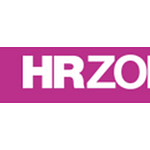In the workplace, it can be easy to overlook employee feedback, especially in a large office. However, it is crucial to listen to employee’s voices to make them feel valuable, to provide useful insights into your business, and to facilitate a positive office environment. Thanks to new technologies, it is now easier than ever to regularly request feedback from your employees to improve your business.
Here are some digital resources to encourage employees to share their voice:
Anonymous Feedback Surveys
One of the best ways to receive feedback from many employees at once is with an anonymous feedback survey. Surveys with multiple-choice questions provide concrete data on what the majority of employees believe. These questions could be as simple as stating “you feel your ideas are taken seriously” and asking employees to select how much they agree or disagree with the statement. Open-ended questions can be used for more specific and qualitative feedback. It is important to conduct these surveys routinely, such as once a month or once every three months.
A great resource for creating feedback surveys is the Computer Assisted Web Interviewing tool made by Research America. This tool allows your business to easily create questionnaires or surveys and add images, audio, or video clips to get employee feedback on upcoming project work, for example. These surveys can then be used to improve the office place, streamline meetings, and improve communication in an anonymous and data-based manner. Releasing company-wide press releases on the results and listing suggested future changes that management will implement to address concerns is important to show employees that they are being listened to.
Internal Communication Tools
Internal communication is crucial to ensure employees and managers are on the same page. It is also necessary so employees can have a consistent way to collaborate with each other, as well as an easy way to reach managers for quick questions or feedback. To avoid missing messages due to having to look between multiple tools, it is important to use a single primary internal communication tool. An instant messaging tool like Google Hangouts might be a good fit if your primary goal is quick communication.
Another benefit of using an internal communication tool instead of email is that it better simulates real face-to-face conversations. Short-form messages allow for more casual discussions and for more natural collaboration between employees. Email can instead be used for more complicated issues or for communicating with clients. Video conferencing can also be a nice alternative for problem solving, idea generation, or brainstorming sessions.
Digital Check-Ins
Daily digital check-ins are a great way to connect with individual employees. Managers can check in on employees to see if they need any help or guidance by using a video call, your internal communication tool, or email. It is best to set a routine by performing these check-ins every morning so that employees are prepared with questions or suggestions at that time.
However, you should remind employees that they should not feel limited to just that check-in time; instead, encourage them to reach out whenever they encounter issues. Additionally, it is crucial to actually take employee feedback to heart and prepare plans to address their concerns. If a larger, more systemic change is needed, then you can ask to arrange a meeting with the employee for a more in-depth conversation about it. Daily check-ins are more appropriate for quickly resolved issues, but they can help reveal larger problems to spend more time on in the future.
Project Management Tools for Collaboration
Although internal communication tools are useful for quick questions or suggestions, having more in-depth software is necessary for effective collaboration on projects. Tools such as Trello, Teamwork Projects, and Monday.com help you assign tasks, keep track of upcoming assignments, and work together with other team members. Time tracking can also be used to identify areas where employees are struggling. For example, if employees are spending hours each day emailing, managers can arrange a meeting to find out if the employee is struggling with a client or project and offer options to help.
Another benefit of project management tools is that they allow employees to break down large projects into manageable tasks spread out over a period of time. These tasks can then be assigned to different employees to further decrease the workload. However, planning routine meetings to ensure that all employees are on the same page is important to achieve a successful and unified end result. Alternatively, having an employee or manager dedicated to reviewing everyone’s work for cohesion can help reduce the time spent in meetings. Regardless, it is important to encourage excellent communication when splitting up a single project between multiple people.
Weekly Shout-Outs for DOING A TOP JOB
Acknowledging employees who were helpful, successful, or just positive influences in the workplace is an excellent way to increase employee happiness and engagement. Being recognised for your good efforts can improve anyone’s mood, so implementing it in the office is a great way to improve morale and increase productivity. This can be done through your collaboration software or internal communication tool, or even in-person or over video conferencing. Having employees share their own shout-outs for people that helped them or did them a favor is a great way to foster more employee collaboration and teamwork. This process is also called peer to peer recognition. Peer to peer recognition has been shown to increase feelings of wellbeing, positivity, and happiness in the workplace. It can also strengthen coworker relationships and encourage more meaningful collaboration and communication.
Overall, digital resources can make it much easier for employees to share their voice in a safe and encouraging environment. Feedback surveys, internal communication tools, and daily check-ins are all great ways to get employees accustomed to sharing their thoughts with the company. Of course, it is important for managers to follow through and actually incorporate employee suggestions. Otherwise, employees may feel ignored or unimportant.
What tools does your company use to encourage employee feedback?
Author: Chans Weber – CEO at LeapClixx.com
Photo credit: Danielle MacInnes on Unsplash




